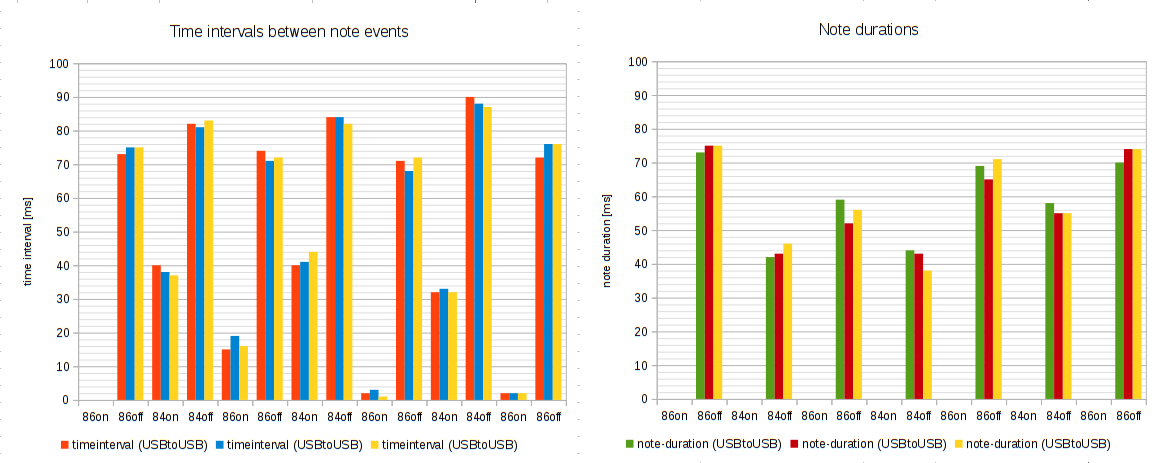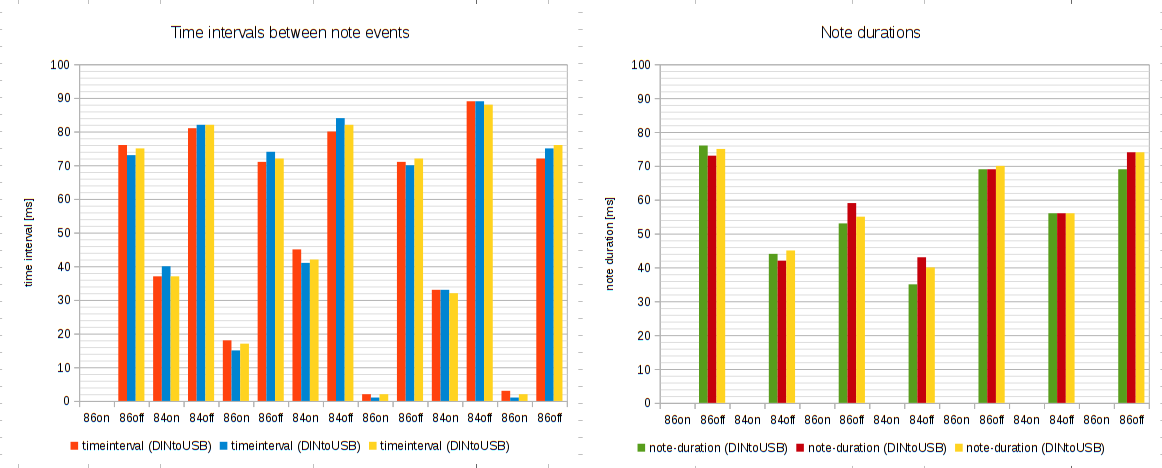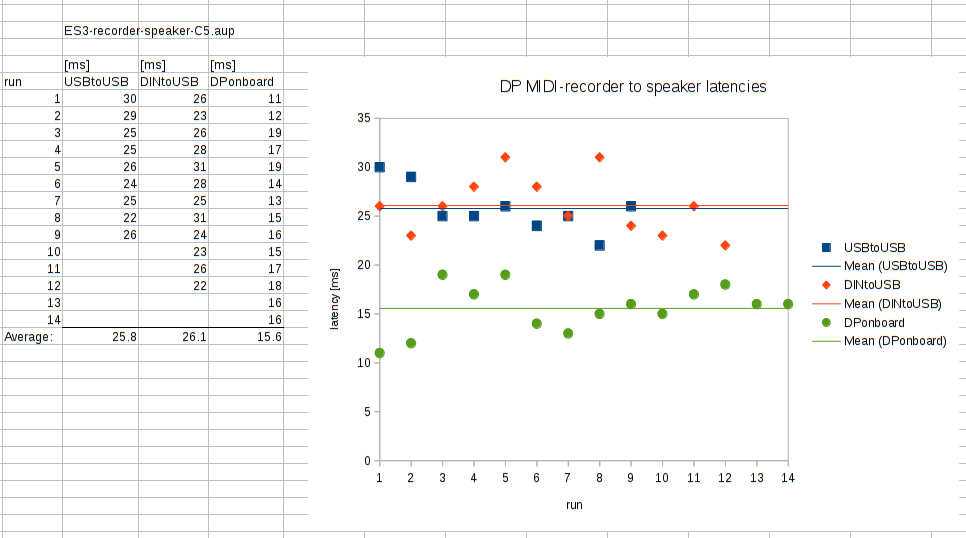To get an idea of the "MIDI-accuracy" I made an experiment with two different chains.
Chain A: DigitalPiano connected via USBtoUSB with my Pianoteq-Laptop. (my standard setup)
Chain B: DigitalPiano connected via a Miditech DINtoUSB converter with my Pianoteq-Laptop.
Test-Signal was a trill of 7 notes (D5/C5 aka MIDI notes 86/84) in the MIDI recorder of my Kawai DigitalPiano. I replayed that same trill over both chains and then put Pianoteq's logged MIDI-timestamps into a libreoffice spreadsheet.
The timeintervals in ms between those note-on/off in both chains are visualized in the upper diagram.
In the lower diagram the durations of the 7 notes are shown (difference between timestamp note-off and -on in PTQ's MIDI log):
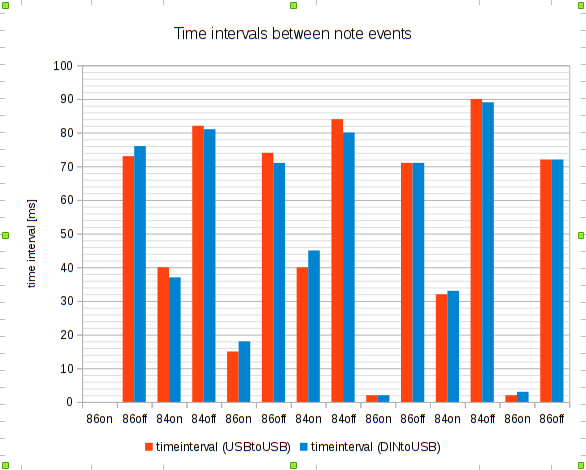
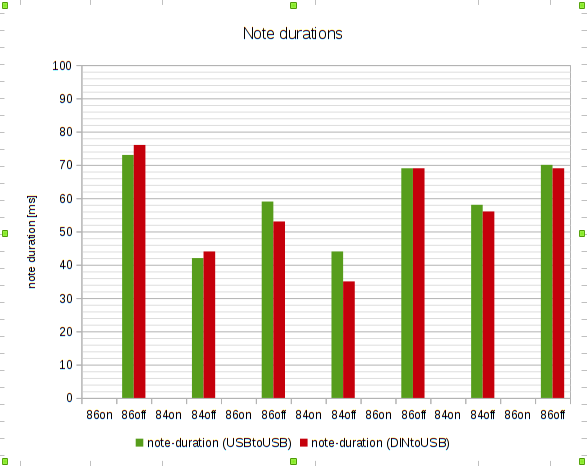
There are up to a few milliseconds variance in the MIDI events and the note durations that the PTQ-soundengine gets.
Whether USBtoUSB or DINtoUSB represents more accurately the test-signal I can't derive from this experiment, because the timestamps in the source file are unknown.
There are theoretical inaccuracies we can expect:
* A minimum of +/- 1 ms from the resolution of a serial MIDI bus with 31250 bit/s.
* +/- 1 ms from Pianoteq's logging (shown resolution 1 ms).
Unknown is potential MIDI-Jitter in the Kawai.
Unknown is the MIDI-Jitter in the external DINtoUSB-converter.
Keep in mind that one of the chains can have a higher *static offset* in latency than the other, which this experiment is agnostic for (it tracks just relative events in time).
Because inaccuracies seem to exist (at least in this short experiment) it is not a bad idea to take the chain that "feels" better to the pianist
Raw data:

Last edited by groovy (14-12-2019 18:03)



